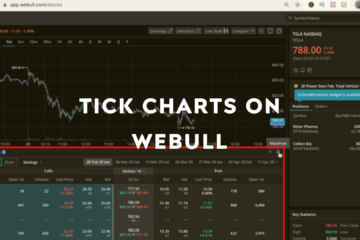One of the most powerful ways to protect the valuable information is by establishing it as Elements of trade secret. But what exactly qualifies as a trades secret, and what are the key elements that must be in place to ensure that your business information is legally recognized and protected?
In this guide, we are going to explore the three elements required to have a trade secret and how these elements help keep business information secure. But first, let’s define what a trade secret is!
What Is a Trade Secret?
A trade secret is any confidential business information that provides a company with a competitive advantage over its competitors. This can include a wide range of valuable information, such as formulas, practices, processes, designs, instruments, patterns, or compilations of information that aren’t generally known or reasonably ascertainable by others.
Unlike patents or trademarks. Trade secrets are not registered with any government body, and their protection lasts as long as the secret is maintained. If a trade secret is disclosed or independently discovered, it loses its protected status. Therefore, businesses must be vigilant in safeguarding their trade secrets to maintain their competitive advantage.
Now that we understand what a trade secret is. Let’s get into the three elements required for a trade secret to be legally recognized and protected.
1. Confidentiality
The first and the most simple and basic requirements of trade secrets is that they must be kept confidential. For information to be considered as a trade secret. The information has to be kept secret. This therefore means that the information is not open to the public domain or any other people who maybe beneficiaries in the event. In fact, it has been said that if confidentiality is lost. Then the information cannot be considered as a trade secret any longer. How to Use Option Block Trades to Spot
Protection of information is something that needs to be done all the time. Companies have to do all they can to make sure that its strategic information is not made known to the public. This ranges from ensuring that the information which is sensitive is shared only to those officials in the organization that require the information. Furthermore, to enhance the security of the information contained in the businesses. It is recommended that the managers should ensure that physical and digital security measures put in place to prevent access to the information by unauthorized persons are effective.
2. Economic Value
The second critical element of a trade secret is that it must provide independent economic value to its holder. In other words the trade secret must enable the business to have an edge in the market over its competitors. This economic value stems from the truth that it is not in the public domain and potential users may find it difficult to acquire it.
The economic value of a trade secret can manifest in various ways. For example, a trade secret might enable a company to produce a product at a lower cost than its competitors. Then resulting in higher profit margins. Alternatively, A trade secret might allow a company to develop a unique product or service that sets it apart from competitors. Leading to increased market share and customer loyalty.
The economic value of a trade secret is directly tied to its secrecy. If the secret were to be disclosed or independently discovered. The business would lose its competitive advantage, and the information would no longer have the same economic value. This is why maintaining confidentiality is so crucial to the protection of a trade secret.
3. Reasonable Efforts
The third and final element required for a trade secret is that the trade secret holder must take reasonable measures to maintain its secrecy. Simply having valuable and confidential information is not enough to qualify as a trade secret. The business must also demonstrate that it has taken proactive steps to protect the information from unauthorized access or disclosure.
Reasonable efforts to protect a trade secret can take many forms. Depending on the nature of the information and the specific risks involved. Some common measures include:
-
Nondisclosure Agreements (NDAs):
Requiring employees, contractors, and business partners to sign NDAs is a common way to legally enforce the confidentiality of trade secrets. These agreements typically include provisions that prohibit the disclosure or use of the trade secret without authorization.
-
Access Controls:
Limiting access to the trade secret to only those individuals who need to know the information is a critical step in protecting it. This might involve implementing physical security measures. Such as restricted access to certain areas of the workplace, or digital security measures, such as password protection and encryption.
-
Employee Training:
Educating employees about the importance of trade secrets and the specific measures. They need to take to protect them is essential. This might include training on data security practices, as well as the legal consequences of unauthorized disclosure.
-
Monitoring and Auditing:
Regularly monitoring and auditing access to the trade secret can help identify potential risks and ensure that the measures in place are effective. This might involve tracking access logs, conducting security audits, and responding quickly to any potential breaches.
-
Third-Party Contracts:
When working with third-party vendors or partners. Businesses should include specific provisions in their contracts that require the protection of trade secrets. This might include confidentiality clauses, as well as requirements for the third party to implement their own security measures.
The key is that the efforts must be “reasonable” in the context of the specific trade secret. What constitutes reasonable efforts will vary depending on the nature of the information, the industry, and the potential risks. However, the courts generally expect businesses to take active and deliberate steps to protect their trade secrets.
Wrapping Up
Three Elements of Trade Secret is one of the most effective ways to provide protection to the valuable information of any business and sustain it competitive advantage. However, to qualify for trades secret protection, the information must meet three critical criteria. If the information is the type that must be kept confidential then it has to have some independent economic utility and the holder has to exercise reasonable care to protect it. Explaining these elements. It is possible to recollect that companies can protect the information which is considered as their trade secrets quite effectively and legally.




